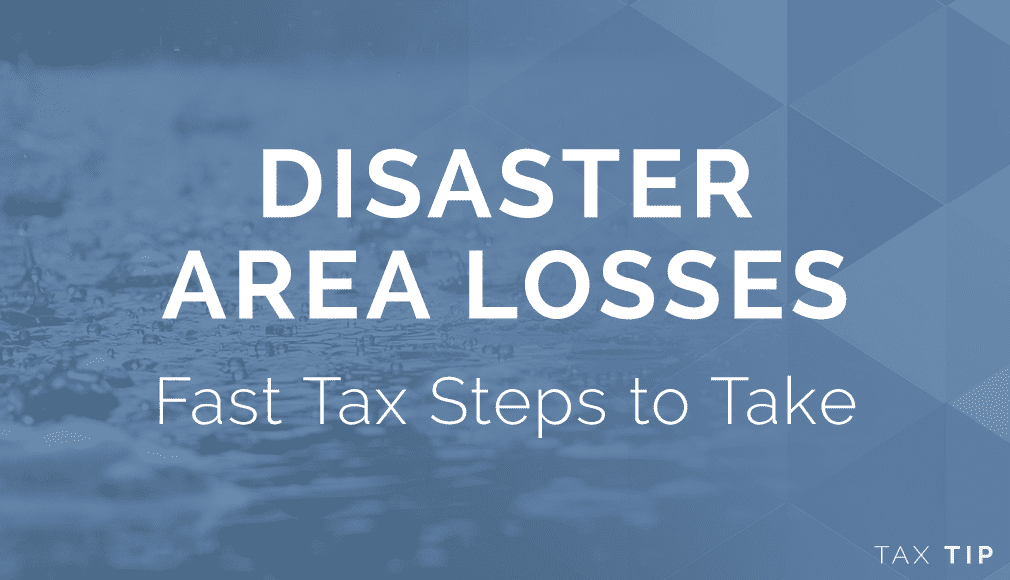

As most of our fellow Philadelphia and Mid-Atlantic residents know, August is the middle of hurricane season for the eastern and southern coasts. Other regions of the U.S. experience tornadoes, floods, and wildfires. If you’re unfortunately victimized by a natural disaster this summer, you could experience dramatic financial and emotional loss.
While it’s devastating to face this kind of catastrophe, it’s helpful to know you may be able to claim a casualty loss deduction on your tax return, even though the requirements are strict. If you live in an area that is deemed a federal disaster area, you may find faster tax relief.
For starters, you may deduct a casualty loss for damage caused by an event that is “sudden, unexpected, or unusual.” This includes destruction of property from natural disasters like hurricanes and even dented fenders or broken windshields from vehicle collisions. But you can’t deduct casualty losses caused by gradual decay or deterioration, like damage from a summer drought.
After you reduce your personal loss by any insurance reimbursements, the deductible amount is subject to two limits.
For example, if your AGI is $100,000 and you suffer a $25,000 loss to your home after insurance reimbursements, your deductible loss is $14,900.
“Determining the exact amount of loss can be tricky,” adds Associate Partner Julie Strohlein, CPA. “For a personal residence, the loss is defined as the decrease in fair market value as a result of the casualty. Most people do not have a very recent appraisal if they aren’t trying to sell the property.”
“The amount of the loss cannot be determined by the cost of repairs. Sure, your hardwood floor may have been ruined by water damage, but the cost of the new floor isn’t necessarily how much the value of your home decreased because of the damage.”
Normally, you’re required to deduct casualty losses in the year the event occurs. However, for a loss suffered in an area that’s declared a federal disaster area, you can elect to deduct the loss on the tax return for the year immediately preceding the disaster. Therefore, homeowners with a loss due to a hurricane in 2017 might amend their 2016 return to obtain faster tax relief.
“Because the amount of insurance reimbursement must be subtracted before claiming the loss, a taxpayer may need to use estimated amounts on the tax return in which the casualty loss is claimed,” continues Julie. “If the actual insurance proceeds are more or less than the estimate, the amount must be adjusted on the tax return for the year in which the proceeds were actually received. This means that one casualty loss event may affect your tax return for two different years.”
The IRS requires you to submit detailed information with this special election. If you are faced with casualty loss from a disaster, contact your Alloy Silverstein CPA so we can go over the details.
Contact us for tax planning guidance and more information →
© MC 2017 | “Tax Tips” are published weekly to provide current tax information, tax-cutting suggestions, and tax reminders. The tax information contained in this site is of a general nature and should not be acted upon in your specific situation without further details and/or professional assistance.
Empowering business owners and individuals in South Jersey and Philadelphia to feel confident through proactive accounting and advisory solutions.